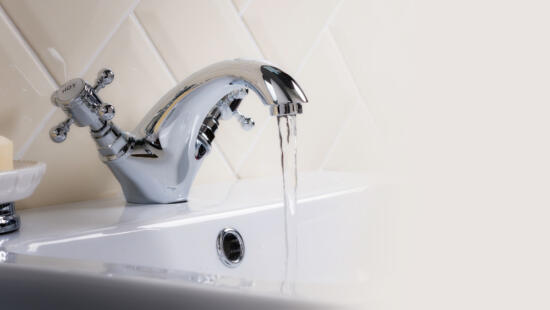Hard water is a common issue in many homes, and it can lead to unsightly mineral deposits on your faucets. This build-up not only spoils the appearance of your fixtures, but it can also impede their function. Luckily, there’s a surprisingly simple and effective method for removing hard water deposits from your faucet.
In this article, we will walk you through the process step by step. By the end, you’ll have all the information you need to keep your faucets looking and functioning at their best.

Why Is Hard Water a Problem?
Before we dive into the solution, let’s take a moment to understand the problem. Hard water is water that has a high mineral content. It’s perfectly safe to drink, but it can leave behind deposits of calcium and magnesium on your faucets. Over time, these deposits can build up, creating a crusty, white layer that is hard to remove and can interfere with the operation of your faucets.
What You’ll Need
To effectively remove hard water deposits from your faucet, you’ll need a few items:
- A soft cloth or sponge
- A towel
- White vinegar
- Warm water
- A rubber glove, rubber jar opener, or strap wrench
Steps to Remove Hard Water Deposits
Step 1: Prepare Your Vinegar Solution
First, mix a solution of equal parts white vinegar and warm water. This 50/50 solution is potent enough to dissolve the mineral deposits, yet gentle enough not to damage your faucet.
Step 2: Apply the Solution
Soak a towel in your vinegar solution, then drape it around the handle or any other part of the faucet where you notice hard water buildup. The acetic acid in the vinegar will work to dissolve the mineral deposits.
Step 3: Remove Faucet Pieces
After allowing the vinegar solution to sit for a while, it’s time to remove the faucet pieces. This might be challenging if there’s a significant amount of hard water buildup. Don a rubber glove, grab a rubber jar opener, or use a strap wrench for added grip. Then, remove the bonnet of the handle by turning it counterclockwise.
Step 4: Clean the Faucet
Finally, with the faucet disassembled, use your cloth or sponge to clean off any remaining mineral buildup. Dip it in the vinegar solution and gently scrub the faucet. Rinse with warm water and dry thoroughly.
With these steps, you can remove hard water deposits and restore your faucets to their former glory. It’s a simple and effective method that requires only common household items. Regular cleaning will prevent hard water buildup from becoming a significant issue, keeping your faucets looking and working great for years to come.
Wrapping Up
In conclusion, hard water can be a nuisance, but it doesn’t have to ruin your faucets. With a little time and effort, and the right technique, you can easily remove hard water deposits and keep your fixtures looking pristine. So, roll up your sleeves, gather your supplies, and give your faucets the care they deserve.
Remember, a well-maintained home is a happy home. And, with these easy-to-follow steps, you’re well on your way to keeping your home in top shape. Happy cleaning!

Jay
Jay is a health and wellness enthusiast with expertise in water quality and nutrition. As a knowledgeable advocate for holistic well-being, Jay successfully manages Type 2 Diabetes through informed lifestyle choices. Committed to sharing reliable and authoritative insights, Jay combines firsthand experience with a passion for enhancing health."
